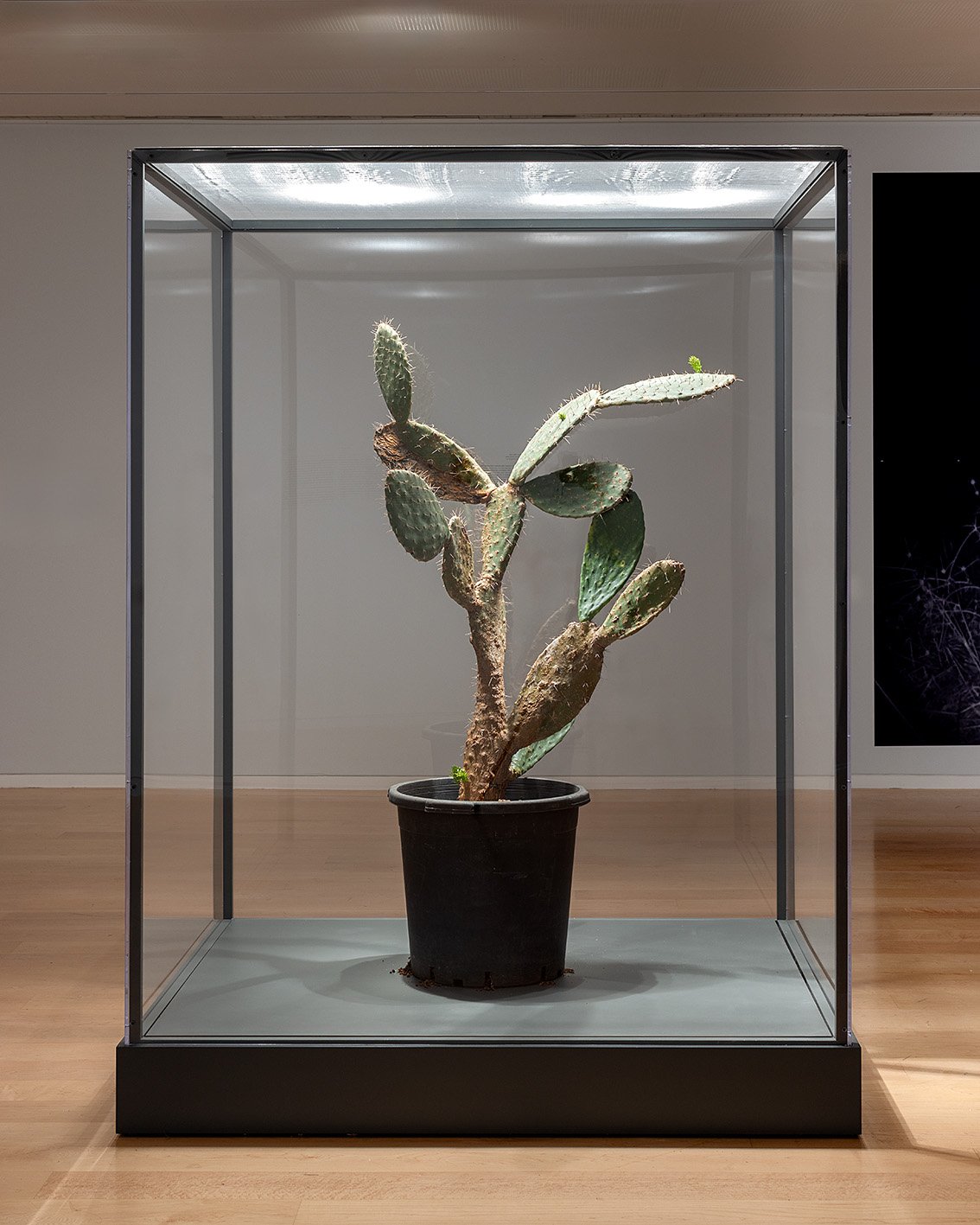
A sizeable sabra cactus slowly decays in the center of the gallery. It is not the vitrine and lack of daylight killing it but the attack of a scale insect. This insect – the prickly pear cochineal (Dactylopius opuntiae) – feeds exclusively on sabra plants and secretes toxins that form a white layer on the sabra pads. Contaminated sabras turn yellow and eventually atrophy and drop. Originating in Mexico, the cactus arrived in our area in the 18th century. It quickly became a symbol of Palestinian agriculture, where it was used as a natural border separating land parcels. Since the 1930s, the term “tzabar” was used to describe the first generation of Jews born in the country and to symbolize the new Jew, the native Israeli. After 1948, sabra became the symbol of the Palestinian catastrophe. Sabra bushes remained almost the only testimony of hundreds of villages whose residents fled or were expelled during the war. A biological-current affairs issue joins this complicated symbolic history: in the summer of 2013, sabra bushes contaminated with the cochineal were found in Metula, from where they spread all over the north, threatening to kill the sabra plants in the Galilee. One hypothesis holds that the cochineal came across the Lebanese border (similar contaminates were found in southern Lebanon), perhaps due to an import of sabra plants with the “wrong” cochineal. (A different scale insect, Dactylopius coccus, has been used for hundreds of years to produce the valuable carmine red pigment.) The Lebanese, in contrast, blamed Israel for spreading the contaminant from “northern Palestine.” In the following years, researchers at Volcani Institute tried to contain the contamination with various biological agents, including the distribution of thousands of Mexican beetles, the cochineal’s natural enemies.
Written by: Mira Lapidot





A sizeable sabra cactus slowly decays in the center of the gallery. It is not the vitrine and lack of daylight killing it but the attack of a scale insect. This insect – the prickly pear cochineal (Dactylopius opuntiae) – feeds exclusively on sabra plants and secretes toxins that form a white layer on the sabra pads. Contaminated sabras turn yellow and eventually atrophy and drop. Originating in Mexico, the cactus arrived in our area in the 18th century. It quickly became a symbol of Palestinian agriculture, where it was used as a natural border separating land parcels. Since the 1930s, the term “tzabar” was used to describe the first generation of Jews born in the country and to symbolize the new Jew, the native Israeli. After 1948, sabra became the symbol of the Palestinian catastrophe. Sabra bushes remained almost the only testimony of hundreds of villages whose residents fled or were expelled during the war. A biological-current affairs issue joins this complicated symbolic history: in the summer of 2013, sabra bushes contaminated with the cochineal were found in Metula, from where they spread all over the north, threatening to kill the sabra plants in the Galilee. One hypothesis holds that the cochineal came across the Lebanese border (similar contaminates were found in southern Lebanon), perhaps due to an import of sabra plants with the “wrong” cochineal. (A different scale insect, Dactylopius coccus, has been used for hundreds of years to produce the valuable carmine red pigment.) The Lebanese, in contrast, blamed Israel for spreading the contaminant from “northern Palestine.” In the following years, researchers at Volcani Institute tried to contain the contamination with various biological agents, including the distribution of thousands of Mexican beetles, the cochineal’s natural enemies.
Written by: Mira Lapidot